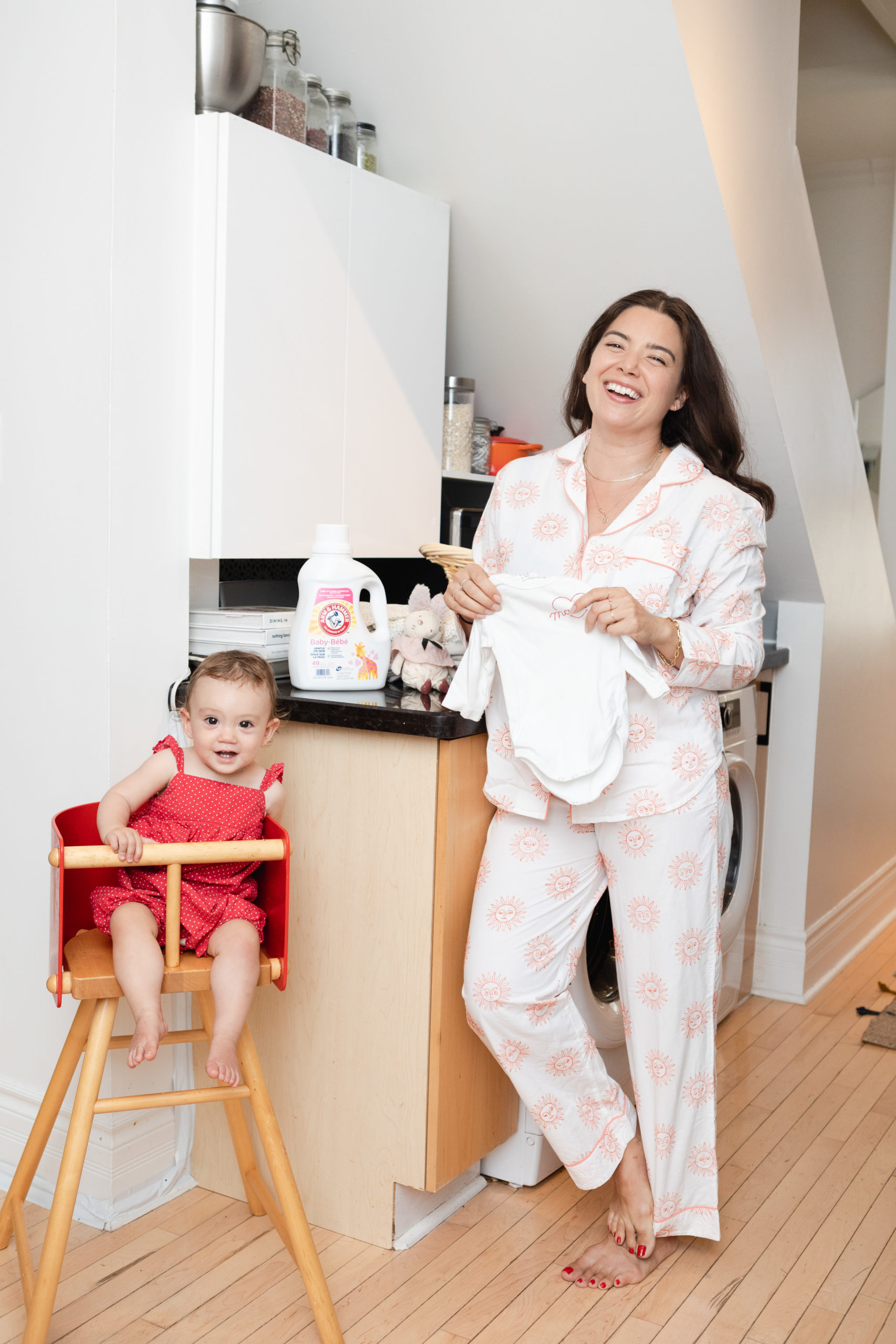Image: Shutterstock
Sleep is essential for a baby’s healthy growth, and it includes naps. While most babies nap during the day, some may nap for very short periods, multiple times a day. Short naps during the day are commonly referred to as catnaps. It is not uncommon for infants to catnap frequently or once in a while. Catnaps or short naps let a baby get some quick sleep, but parents may be concerned about its long-term outlook.
Read this post to learn the significance of catnaps for babies, the reasons behind them, and ways to manage a baby’s catnaps.
Are Short Naps Bad For The Baby?
There is no evidence that short naps could negatively affect the baby’s health. The number of naps per day could reduce as the baby grows older. Babies up to five months may nap up to five times per day. Infants between six and 12 months may have four naps per day, while babies older than 12 months may usually have two naps per day (1).
The total hours of daily sleep required by the baby include daytime naps. Therefore, as long as the baby is napping adequately to meet the total hours of sleep for a day, there is no reason to be concerned.
Why Does The Baby Catnap?
Below are some reasons why a baby may catnap or have multiple short naps during the day.
- General preference for catnaps: Most babies catnap because they prefer doing it. There is usually no notable underlying cause, and, thus, no reason to be concerned since it is based on the baby’s individual preference.
- Lack of sleep routine: Some babies may often catnap due to lack of sleep routine. It is always best to maintain a daily routine for naps and nighttime sleep. While naptime may change during the day, always place the baby to bed at the same time each night. If your baby catnaps as per their desire, ensure they get the minimum daytime sleep by avoiding distraction during their naptime.
- Inappropriate feeding pattern: Observe an appropriate feeding pattern so that it does not interfere with the baby’s sleep. In most cases, you may be able to set a feeding routine once breastfeeding establishes in three to four weeks (2).
- Uncomfortable sleep environment: Intense sensory stimulation through bright lights, loud noises, or inappropriate room temperature may affect the baby’s sleep, causing them to catnap at odd times.
- Illness: Sometimes, illness may cause a baby to be drowsy, causing them to take frequent catnaps. In such cases, you may notice other signs of illness, such as fever, loss of appetite, and general lethargy.
When To Be Concerned About Catnaps?
Catnaps in babies are usually are not a cause for concern. Nevertheless, you may speak to a pediatrician or a certified pediatric sleep expert if your baby displays the following patterns or attributes of napping.
- Preference for daytime catnaps after three months. Babies do not have a well-developed circadian rhythm or body clock up to three months of age (3). Thus, their sleep is equally spread across daytime catnaps and nighttime sleep. However, from the age of four months, babies’ sleep becomes increasingly nocturnal, with daytime naps constituting only three to four hours a day (4). If your baby continues to catnap often during the day and sleeps less during the night, you may discuss it with a pediatrician.
- Your baby’s catnaps don’t meet minimum daytime sleep hours. There is no minimum duration per catnap. However, for babies younger than four months, their daytime sleep must nearly equal their nighttime sleep. Babies older than four months must get at least 30 minutes and preferably at least an hour of daytime nap (5). If your baby’s catnaps do not add up to the minimum requirements, causing the baby to be tired all the time, take a doctor’s opinion.
- Catnaps mostly occur in the evening. Napping in the evening may interfere with sound nighttime sleep. You may check with your doctor if your baby has an increased preference for evening catnaps. In most cases, poor daytime routine planning could be the reason behind it.
- Catnaps seem to interfere with feeding. Most babies are able to develop a healthy routine interspersed with napping and feeding. In rare cases, napping may interfere with feeding, warranting a doctor’s consultation.
- The baby generally appears lethargic. Some babies may often catnap due to general lethargy and drowsiness. There could be several reasons why a baby may feel lethargic all the time. Consult a doctor in such cases since it may be a result of infection or other pathological cause.
Do Babies Grow Out Of Taking Catnaps?
There is no definite age when a baby may stop catnapping and have fewer but longer naps a day. In most cases, catnaps and napping, in general, may become infrequent once a baby turns into a toddler.
The total daytime naps may reduce to a couple of hours by age two. Many children may stop napping entirely by the age of three years, although some may display this behavior by their first birthday (1). However, the total hours of nighttime sleep remain consistent.
Children older than three should have ten to 13 hours of sleep, including naps, per 24 hours (6). If your child gets it through nighttime sleep alone, there is no reason to be concerned if they do not catnap anymore.
How To Manage A Baby’s Catnaps?
Below are some methods and practices you may consider to help a baby have effective catnaps.
- Implement age-appropriate sleep routine: Establishing a daily sleep routine can cue the baby when it is time to sleep. Adequate nighttime sleep could ensure the baby does not have catnaps at odd times. Have a bedtime routine at night. It may include bathing the baby, reading to them, singing to them, dimming the lights, and putting them in the crib (7).
- Optimize their environment: Dimming the lights, adjusting the room temperature, and keeping the noise levels down can calm the baby and help them sleep better (8). It can encourage healthy napping during the day and adequate sleep at night.
- Place your baby in the crib when drowsy: Look for the typical signs of sleepiness, such as yawning, rubbing the eyes, or frequent fussing. Do not wait until the baby falls asleep in your arms to place them in the crib for naps. Instead, place them in the crib the moment you notice drowsiness. It will make it easier for the baby to soothe themselves to sleep, ensuring adequate naps each day (9).
- Swaddle the baby: Swaddle the baby snugly with a wearable baby blanket without any attachments and loose ends before placing them for naps in the crib. Swaddling could make the baby feel comfortable and help them nap better. It may also prevent them from waking up due to the startle reflex (10). Stop swaddling when the baby is able to roll at least in one direction. Babies may learn to roll between two and four months of age (11). Warm onesies could be an appropriate alternative to swaddling for older babies.
- Feed baby adequately: Observe an age-appropriate feeding schedule to prevent the baby from waking up due to hunger pangs between naps. The feeding schedule could vary for each baby, and you may set one based on the baby’s demands for feeds. If you have trouble establishing a feeding routine, consult a certified lactation consultant.
- Offer a pacifier: The American Academy of Pediatrics suggests offering a pacifier during naps and bedtime (2). It could make it easier for the baby to self-soothe and sleep better. Offer a pacifier only after four weeks when breastfeeding is well-established. Use a one-piece pacifier and do not force the baby to use it if they do not like it. You may phase out the pacifier by 12 months when a baby is better at self-soothing.
Catnaps or short naps are an integral part of the baby’s sleep routine and essential for their growth. It is okay for the baby to have short naps, and there is no need to force them to stop doing it. Most babies grow out of napping by themselves as they grow older. Good sleep habits and routine can help the baby reap maximum benefits from their daytime short naps.


































